
Vol. X, No. 1, January-February 2010
- Editor's Corner - North to Alaska travelogue
- White paper: The Great Recession's long-term impact on consumers and location-based businesses
- Foundations Entertainment University announces 2010 dates
- LAN gaming centers
- News you may have missed
- The Bowl Room & Freeze Club in Kuwait
- Warm air dryers in restrooms increase bacteria on hands
- Current projects
- Upcoming presentations by Randy White
Editor's Corner - North to Alaska travelogue
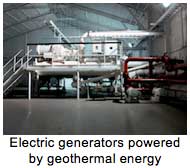 You may think I was a little crazy, but in mid-January our family headed to Alaska for a short vacation. Some of our friends have joked, “I guess it wasn’t cold enough for you in Kansas City.” [It was about -15F (-26C) when we left town]. We went for two main reasons: to see the Aurora Borealis (northern lights) and to go mushing (dog sledding).
You may think I was a little crazy, but in mid-January our family headed to Alaska for a short vacation. Some of our friends have joked, “I guess it wasn’t cold enough for you in Kansas City.” [It was about -15F (-26C) when we left town]. We went for two main reasons: to see the Aurora Borealis (northern lights) and to go mushing (dog sledding).
You really can’t understand Alaska – no matter how many movies you see about it or shows you watch on the Travel Channel, Discovery Channel – until you visit. First off, it’s a long way there. World maps tend to distort the distance from the lower 48 (continental U.S.). We flew into Fairbanks, which is 1,500 miles north of Seattle, Washington. From Kansas City it is 2,700 miles, farther than it is from New York on one side of the U.S. to San Francisco on the other.
The other thing you don’t truly comprehend until you arrive is just how cold cold can be. The entire time we were there, the temperature didn’t go higher than -5F (-20C). Yes, that was the high temperature.
At twice the size of Texas, Alaska is huge and occupies 16% of the total U.S. land area. Yet its population is a little less than 700,000.
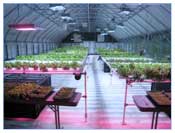 We stayed at Chena Hot Springs Resort, about 60 miles northeast of Fairbanks and literally at the end of road. In January when we were there, there’s only about 4.5 hours of daylight each day. In fact, the sun was so low on the horizon that it never shone in the Valley where our resort was located. Chena Hot Springs Resort is totally “off the grid.” It gets all its heat and generates all its electricity using geothermal energy. In our room, the biggest problem wasn’t being warm enough, it was being so hot we had to open the windows. When the hot water for the heat is free, the heat can always be on.
We stayed at Chena Hot Springs Resort, about 60 miles northeast of Fairbanks and literally at the end of road. In January when we were there, there’s only about 4.5 hours of daylight each day. In fact, the sun was so low on the horizon that it never shone in the Valley where our resort was located. Chena Hot Springs Resort is totally “off the grid.” It gets all its heat and generates all its electricity using geothermal energy. In our room, the biggest problem wasn’t being warm enough, it was being so hot we had to open the windows. When the hot water for the heat is free, the heat can always be on.
The last place you’d expect to have a heated greenhouse lighted constantly by electric lights is Alaska. Well, the resort had one where they hydroponically grew herbs, lettuce and tomatoes they served in the restaurant. With extremely low-cost geothermal generated electricity and free hot water, the energy bill becomes a non-issue.
And until you mush in Alaska, you can’t fully appreciate the dogs, their power or how important dog sledding transportation is in many areas during the winter. When I went mushing, the guide rode in the sled and I was the driver. 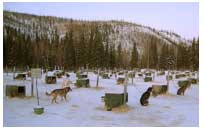 Together with the sled, we probably weighed 400 pounds (180 kilos). Originally, we used only four of the resort’s 72 dogs. However, Wallace, who was on the left, was so strong the sled continually pulled to the left, so we had to add a dog to Wallace’s right to counter-balance him. The Alaskan Huskies are tough. They live outside year round in dog huts with only straw as the bedding. The dogs live to mush and aren’t happy unless they are pulling sleds. And they have incredible endurance.
Together with the sled, we probably weighed 400 pounds (180 kilos). Originally, we used only four of the resort’s 72 dogs. However, Wallace, who was on the left, was so strong the sled continually pulled to the left, so we had to add a dog to Wallace’s right to counter-balance him. The Alaskan Huskies are tough. They live outside year round in dog huts with only straw as the bedding. The dogs live to mush and aren’t happy unless they are pulling sleds. And they have incredible endurance.
If you’ve never gone mushing, you need to put it on your bucket list (things to do before you die, or “kick the bucket”). Here are the five dogs pulling my sled.
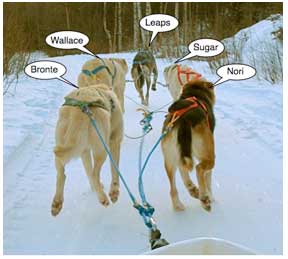
If you still can’t believe I went mushing, check out this 20-second video. The video was taken by the guide sitting in the sled that I was driving.
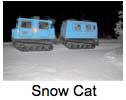 Going on an expedition to see the Aurora Borealis was an adventure. Around 9 p.m. we climbed into a Snow Cat and took a bumpy half-mile ride up a trail to a mountain top where there was a yurt with some heat. But it was cold and windy. By about 11 p.m. we began seeing the Aurora Borealis, but with the temperature at -45F (-42C) by midnight, we could stay outside only a minute or two, even with our many layers of special cold-weather clothing. Then we’d run back inside the yurt to huddle around the propane heater trying to warm up. Still, it was well worth it to see one of nature’s wonders.
Going on an expedition to see the Aurora Borealis was an adventure. Around 9 p.m. we climbed into a Snow Cat and took a bumpy half-mile ride up a trail to a mountain top where there was a yurt with some heat. But it was cold and windy. By about 11 p.m. we began seeing the Aurora Borealis, but with the temperature at -45F (-42C) by midnight, we could stay outside only a minute or two, even with our many layers of special cold-weather clothing. Then we’d run back inside the yurt to huddle around the propane heater trying to warm up. Still, it was well worth it to see one of nature’s wonders.
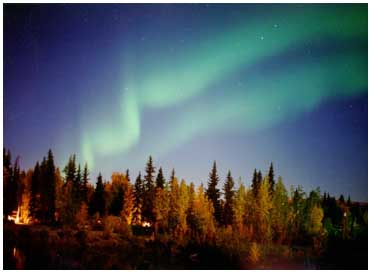
An interesting phenomenon in the Fairbanks area is ice fog. When the temperature is around -30F (-34C) or colder, the super-cold air cannot absorb any more moisture. So moisture from car exhausts and even the exhaled breath from pets and humans crystallizes into tiny, microscopic ice particles to form ice fog and to crystallize on any available surface.
After experiencing Alaska in the heart of the winter, you can only wonder how Native Americans, miners, prospectors and early settlers ever survived without all our modern technology, special clothing and electricity for heat.
Randy White,
Editor
Vol. X, No. 1, January-February 2010
- Editor's Corner - North to Alaska travelogue
- White paper: The Great Recession's long-term impact on consumers and location-based businesses
- Foundations Entertainment University announces 2010 dates
- LAN gaming centers
- News you may have missed
- The Bowl Room & Freeze Club in Kuwait
- Warm air dryers in restrooms increase bacteria on hands
- Current projects
- Upcoming presentations by Randy White


